Most people prefer using oil furnaces as the most convenient heating option for their homes. This is primarily because of the low cost of heating oil.
However, the problem arises when you set out to find the ideal furnace for yourself. With the plethora of options available from different brands, you are bound to find yourself confused.
To help you with that, here’s a complete guide on oil furnaces.
At a Glance: Our Top Picks for Oil Furnaces
- OUR TOP PICK: Bryant Preferred Series OVM
- RUNNER-UP: Day & Night QuietComfort 87 Low Boy
- BEST BUDGET OPTION: Lennox Elite Series ELO183
Comparison of the Best Oil Furnaces
| IMAGE | PRODUCT | |
|---|---|---|
Our Top Pick  |
| View Latest Price → |
 |
| View Latest Price → |
Best Budget Option  |
| View Latest Price → |
 |
| View Latest Price → |
 |
| View Latest Price → |
How to Choose an Oil Furnace
Choosing the right oil furnace is actually quite easy. Primarily, you need to keep in mind the following factors:
Furnace Size
You must have the right size of the furnace; if the unit is too small, it won’t be able to heat up the entire house. On the other hand, if it is too large, you will be wasting fuel, and, in turn, your money on producing heat that your house doesn’t need.
To land the ideal size, you need to have a look at the heat output, which is measured in BTUs, and match that with your house’s size. While doing so, remember that the size of your house doesn’t just take into account the square footage. You also need to consider factors such as ceiling height, number of windows, and insulation to know the BTUs you would ideally need.
You could also use our furnace sizing calculator that will help you estimate which size is best for you and your house.
Blower
Compared to gas furnaces, there isn’t too much variability when it comes to oil furnaces. Most units are just single-stage furnaces, so they run at their full capacity once they are switched on.
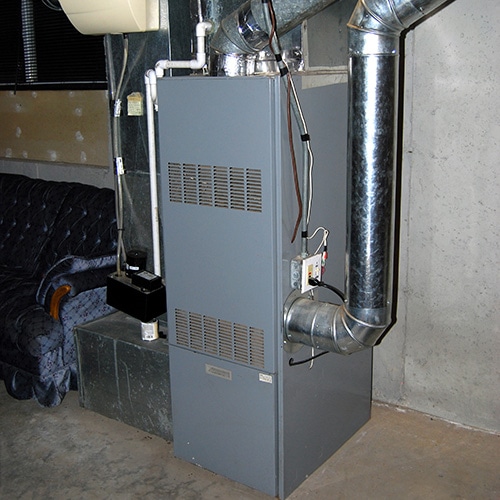
However, one thing that can have an effect on the performance is the blower. Oil furnaces come with single-speed, multi-speed, and variable-speed blowers. As the name suggests, a single-speed blower maintains its speed throughout its operations while the other two kinds change speeds throughout the heating cycle. By doing so, they avoid running at the maximum speed before the air present in the combustion chamber is hot or once the burner has stopped working.
The best option to go for is a variable-speed motor. However, such units are more expensive, but they do promise more efficiency.
Heat Exchanger
Oil furnaces generally feature only one heat exchanger, which is why a lot of combustion heat is long in the form of exhaust gases. As a reason, an oil furnace’s fuel efficiency ranges from 83% to 87%.
Some oil furnaces feature a second heat exchanger made of stainless steel that captures and transfers heat from exhaust gases. As a result, they feature up to 95% AFUE. However, only a few brands make oil furnaces with two heat exchangers, so you might not easily find a model to your liking.
Review of the Best Oil Furnaces
Oil furnaces operate quietly to efficiently warm up your home season after season. Here we have reviewed some of the best models available so that you can choose the one that fits your requirements:
Best Overall
Bryant Preferred Series OVM

Specifications
Energy Efficiency (AFUE): 86.40%
Parts Warranty: 10 Year(s)
Unit Warranty: Limited Lifetime Warranty on the heat exchanger
We may earn commission from purchases made from our links, at no additional cost to you
What Recent Buyers Reports
Bryant has been a technological innovator and pioneer in the cooling and heating market. Its products are very popular among users, and the preferred series OVM is no different. Recent buyers find its clean-burning performance and fuel efficiency highly attractive.
Why it Stands Out to Us
One of the most efficient and cost-effective oil furnaces available, the Bryant Preferred Series OVM, comes with 86.6% AFUE. This variable-speed model comes with a solid warranty, helps improve home comfort, and is constructed with quality components with an excellent service record.
Another great thing about this oil furnace is that it is well-built and will serve you for 17-20 years easily. However, with regular maintenance, you can increase this period longer. Most manufacturers offer a five-year parts warranty on their furnace, while the OVM comes with a ten-year parts limited warranty, which we find highly convenient.
Bottom Line
The Bryant Preferred Series OVM is a solid, quiet, and efficient oil furnace that will keep your home quite comfortable while keeping the energy costs in check. If you are looking for good energy efficiency and reliability, then these furnaces are for you.
Pros
High-performance Riello burner
Sturdy and rust-resistant steel cabinet
Multi poise models for versatile installation
Variable-speed blower motor for enhanced air filtration and temperature control
Long-lasting and corrosion-resistant aluminized and stainless steel heat exchanger
Cons
A bit noisy
Runner-up
Day & Night QuietComfort 87 Low Boy

Specifications
Energy Efficiency (AFUE): 87.50%
Parts Warranty: 10 Year(s)
Unit Warranty: 10-Year No Hassle Replacement(TM) Limited Warranty
We may earn commission from purchases made from our links, at no additional cost to you
What Recent Buyers Reports
The Low Boy furnace delivers quiet performance and comes with energy-efficient features, which is what many recent buyers find very attractive. They love the fact that this unit ensures comfort while providing energy savings. This Energy Star-rated product has managed to become a favorite of users within a very short time, which is why they highly recommend this product to others.
Why it Stands Out to Us
This high-efficiency variable-speed unit provides the ultimate comfort without increasing energy costs. The best thing about this unit is that it adjusts operating speeds to correspond with the changing conditions, thus allowing users to enjoy quiet, consistent, and even comfort. It has an impressive AFUE rating of 86.8% and is designed to fit in compact spaces, which increases its versatility.
We are very impressed with the efficient heating performance of this product. It has a heating capacity of 70,000-154,000 BTUH and has a stainless steel heat exchanger that comes with a lifetime limited warranty.
Bottom Line
The Day & Night QuietComfort 87 Low Boy is the ideal option if you are looking for reliable performance together with comfort management at a reasonable price. It is designed with an insulated, sturdy cabinet that helps to deliver an ultra-quiet operation while keeping you warm during the winter season.
Pros
Limited lifetime warranty on the heat exchanger
Dual-fuel capable for energy-saving heating performance
Designed for excellent performance and corrosion resistance
Variable-speed blower motor delivers enhanced dehumidification
Humidifier and air purifier-compatible for exceptional home air quality
Cons
None
Best for the Money
Lennox Elite Series ELO183
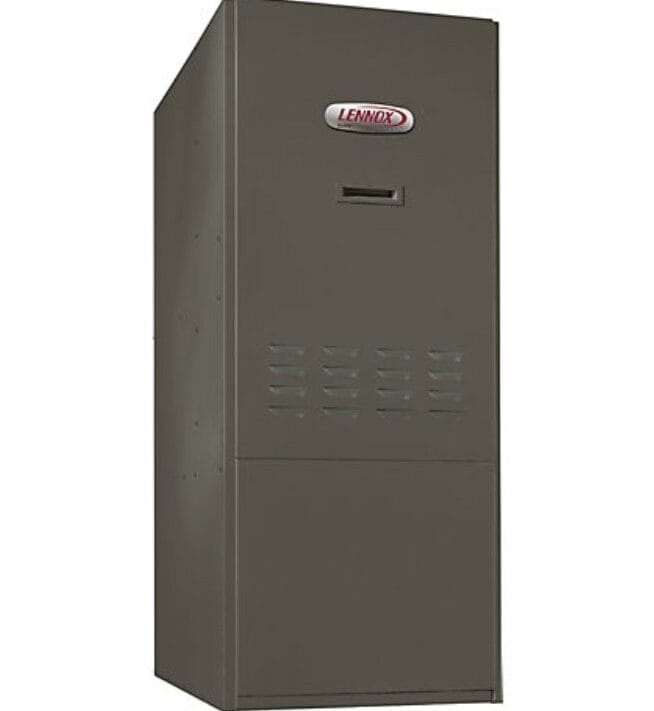
Specifications
Energy Efficiency (AFUE): 83%
Parts Warranty: X5-Year Limited Warranty on covered components / may be eligible for valuable 10-Year Limited Extended Warranty coverage with product registration
Unit Warranty: Limited Lifetime Warranty on Heat Exchanger
We may earn commission from purchases made from our links, at no additional cost to you
What Recent Buyers Reports
Recent buyers find the Lennox furnace to be an outstanding unit. It does a great job of heating the whole house evenly. Many buyers also claim that they used to have cold spots in their homes, but after installing this unit, they now experience rich and consistent heat throughout.
Why it Stands Out to Us
Lennox furnaces are one of the most efficient units available, and their excellent performance makes them one of our favorites. This model features a heavy-duty fuel oil pump that shuts off quickly once the thermostat stops looking for heat. We find this feature highly desirable as it decreases unnecessary heating and temperature spikes, which, in turn, reduces your annual utility expenses.
Moreover, the streamlined design of the ELO183 makes it easier to install it in almost any crawlspace, basement, or closet, thus providing you with additional living space or extra room for add-on air conditioning. The lifetime limited warranty on the heat exchanger and ten-year limited warranty on the covered components are some other features that make this product stand out.
Bottom Line
The Lennox ELO183 makes it possible for users to stay cozy and comfortable without worrying about exorbitant heating bills. With an annual fuel utilization efficiency rating of 83% and an insulated steel chamber, this unit delivers quiet operation and efficient heating.
Pros
83% AFUE helps reduce energy costs
Provides quiet and consistent heating
Beckett Burner delivers efficient combustion
High-quality components that require very little maintenance
Improved heating efficiency with heavy-gauge steel heat exchanger
Cons
May make a fire alarm-like sound until it warms up
Most Efficient Oil Furnace
Adams Lowboy Series
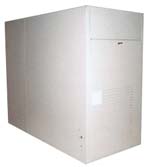
Specifications
Energy Efficiency (AFUE): 95%
Parts Warranty: N/A
Unit Warranty:
20 years Warranty on the heat exchanger
We may earn commission from purchases made from our links, at no additional cost to you
What Recent Buyers Reports
The Adams Lowboy series is the world’s most efficient furnace with an AFUE rating of 95%. It is this feature of this product that recent buyers find highly attractive as it allows them to enjoy greater fuel savings. It comes completely assembled, which is another feature that customers find very convenient.
Why it Stands Out to Us
The most impressive thing about the Adams furnace is that they deliver a high rate of efficiency. This feature not only makes them environment-friendly but also results in reduced energy costs for consumers. They can easily fit in closets, basements, alcoves, attics, and utility rooms. These furnaces do not require expensive double-wall stainless venting, as all models can be vented by using three-inch PVC pipes.
Designed with the exclusive ‘Turbo Reversed Air,’ these furnaces provide positive, smooth ignition and uniform high temperatures for unmatched performance and whisper-quiet operation.
Bottom Line
The Adams Lowboy series is a great mix of innovative technology and outstanding performance. Its stainless steel heat exchanger designed with a pyro-ceramic combustion chamber ensures instant heat on fire up. Moreover, it evenly heats up your home while providing a soundless operation.
Pros
Heavy-gauge steel heat exchanger
CSA design certified and factory-tested
35% more heat with corresponding fuel savings
95% efficient furnace with 50,000 through 250,000 BTUs
Ideal for alcove, basement, attic, utility room, or closet application
Cons
None
Best Mobile Home Oil Furnace
Thermo Pride OME Series
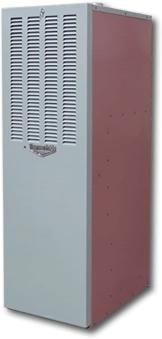
Specifications
Energy Efficiency (AFUE): 86%
Parts Warranty: 10 Year(s)
Unit Warranty: Limited Lifetime Warranty on the heat exchanger
We may earn commission from purchases made from our links, at no additional cost to you
What Recent Buyers Reports
Most buyers who have replaced their furnace with the Thermo Pride OME series find it both economical and dependable. They find the design of this furnace very durable and efficient. Buyers also appreciate the high-quality materials and components used in the construction of these units.
Why it Stands Out to Us
The Thermo Pride furnaces are an outstanding product of superior workmanship, small-town work ethics, and product innovation. These handcrafted products incorporate hometown values like durability, reliability, comfort, high efficiency, and quiet operation. Their exceptional quality and economical price make them superior to the other products available.
The exclusive Octatherm heat exchanger used in these furnaces give them durability and high efficiency. The heat exchangers’ revolutionary design forces flue gases into a high agitation rate, thus increasing heat transfer and efficiency. As a result, users can enjoy a more uniform surface heating.
Bottom Line
The heat exchanger used in the construction of the Thermo Pride furnaces comes with a lifetime limited warranty, which is a testament to the company’s confidence in its products. When you invest in these furnaces, you can be sure that you will not be getting a low-cost unit that compromises quality and price.
Pros
Comes with an exceptional warranty
Highly efficient product with 86% AFUE
Provides reliability, durability, and comfort
Designed and built as a replacement furnace
Handcrafted product made with superior workmanship and latest innovation
Cons
None
What is an Oil Furnace?
As the name suggests, an oil furnace is just a furnace that makes use of oil to produce heat. Some HVAC systems in colder weather climates have an oil furnace as the heating component. It comes with a component that vaporizes oil, which, in turn, produces heat.
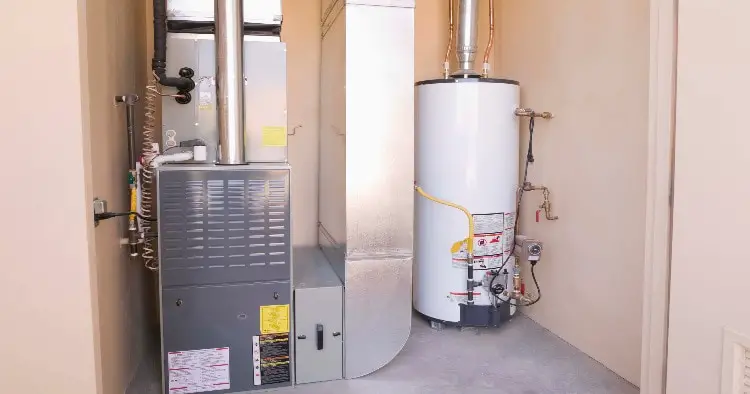
How Does an Oil Furnace Work?
The working mechanism of an oil furnace is pretty simple. A thermostat sends a signal to the controls present on the burner. The furnace has a fuel pump that draws oil to the burner via a filter. The burner then converts the oil into a spray by mixing it with air. This mixture is then ignited in the combustion chamber, making it very hot.
In the heat exchanger, the air absorbs the heat; this hot air is then sent out to the ducts via a blower to heat the house. Eventually, as the air cools down, it makes its way back to the heat exchanger, and the process is repeated. Combustion emissions exit the furnace via the flue.
Types of Oil Furnaces
Oil furnaces are of different kinds, with each offering their own set of benefits. These types include:
Horizontal
Such oil furnaces allow air to enter from one side and exit into the ductwork present at the back. Horizontal furnaces lie closer to the ground and are wider than they are higher. Such units are perfect for houses with low ceilings or areas with insufficient space for standing models.
Upflow
Upflow oil furnaces take air in from the bottom and force it in the upward direction past the heat exchanger. The heat created by the oil is passed through the metal plates and into the air. Once the air in the furnace has warmed up sufficiently, it is pumped out of the furnace top and forced back in via the ductwork again.
Downflow
A downflow oil furnace uses a fan system for blowing air into the furnace’s top and then out through the back into your house. Such units use gravity to ensure a consistent airflow and are found in homes with ductwork installed in the concrete slab rather than the wall.
Waste Oil
This type is made to recycle oil used for lubricating all kinds of machinery and engines. The oil provides efficient heating and allows you to use money by recycling oil.
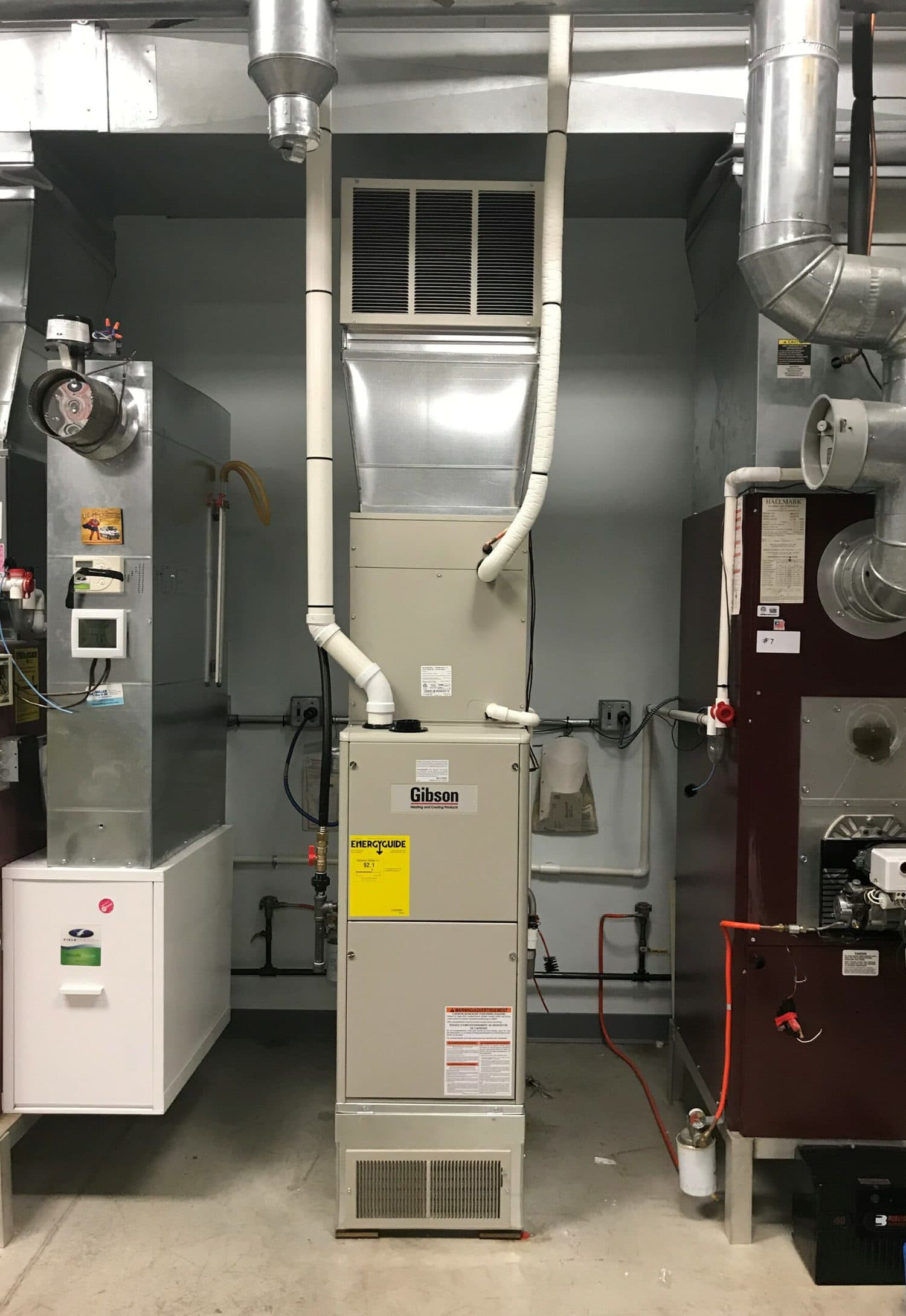
Oil Furnace Nozzle Types
There are basically three types of oil furnace nozzles:
Type A
Such nozzles are basically hollow cone nozzles used in burners with a hollow air pattern. They are also used in small burners that fire below 1.00 GPH. Such nozzles have more stable spray angles and deliver fine droplets that greatly enhance ignition.
Type B
Type B nozzles are solid cone nozzles that produce a spray that distributes droplets uniformly across the pattern to provide smoother ignition.
Type W
Type W nozzles have a spray that is neither too solid nor too hollow and can be used to replace either hollow or solid cone nozzles between 0.40 and 8.0 GPH.
Comparison Overview
Oil furnaces are not the only option when it comes to heating the house. There are other variants, too. So, what makes these better than the other options? Here’s a comparison between different models to help you determine just that.
Heat Pump vs. Oil Furnace
Heat pumps can both heat and cool homes by moving the air in or out. Meanwhile, furnaces can only burn fuel to distribute warm air across the house. The former is the ideal option for places with warmer climates and mild winters while the latter is the most suitable for colder climates.
Heat pumps are also cleaner and more efficient than oil furnaces since you need to burn oil to power a furnace. Plus, once you run out of oil, you have to buy more.
Oil vs. Propane Furnace
Just like oil, propane also heats up quickly, but it is used slower than propane. Oil is also thought to be safer than gas since it isn’t combustible in the air and doesn’t produce carbon monoxide.
Oil vs. Gas Furnace
Since the two variants burn different kinds of fuel, they come with different energy efficiency levels. Gas furnaces and generally more energy-efficient and have an AFUE rating of 80-98%. Meanwhile, oil furnaces come with an efficiency of 80-90%. There are differences in the cost of the furnaces themselves and the cost of fuel.
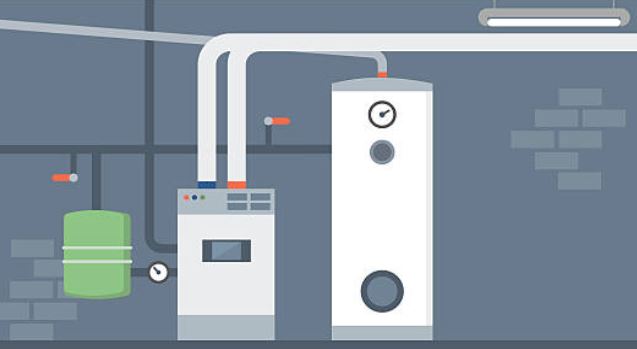
Oil Furnace Troubleshooting
Oil furnaces are a durable and dependable appliance that provides efficient heating for your home. Most of these units have an average lifespan of around ten to fifteen years; however, you can get up to fifteen years of service out of your furnace with proper upkeep and maintenance.
Even with this incredible track record, there are times when some ailment might pop up, and your furnace might need some first-aid. At times like these, having a little knowledge about the common problems with oil furnaces and their troubleshooting can help you save a good amount of money. However, it is best to consult a professional in case the problem seems complicated.
Ran Out Of Heating Oil Furnace Won’t Start
In case you run out of heating oil completely, then you will have to bleed the oil line to air it out, clear the filter, oil pump, and nozzle. Also, you will have to make sure that there is no sludge present as it could cause a blockage.
How To Adjust Water Temperature On Oil Furnace
Oil furnaces have a knob on the side of the water tank. Turn this knob slowly to make incremental adjustments. Keep testing the temperature of the tap water. Stop once you find the water as hot as you want.
How To Restart Oil Furnace
Sometimes, you only have to press the red reset button to restart an oil furnace after a temporary interruption or a power outage. This button is usually located on the control panel. However, if this does not do the trick or your furnace has been idle for a long time, you will have to manually bleed the fuel lines.
Oil Furnace Starts Then Stops
One of the most common problems with furnaces is short cycling, where the furnace starts for a short time and then stops. This can be caused by a faulty sensor, restricted airflow, furnace overheating, and thermostat issues, so make sure to check out those components.
Oil Furnace Not Firing
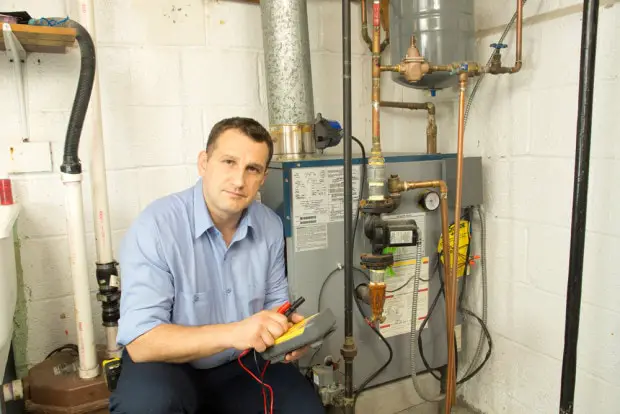
If your furnace is not firing, then it might need resetting. This issue can also be caused by a pilot flame that needs cleaning, problems with the gas valve, a faulty thermostat connection, or a switch that has been turned off. Check the buttons of the furnace to make sure that no switch has been turned off accidentally. Now press the reset button. Give the furnace a minute to start.
If it still does not start, then check the pilot light. Clean it if it looks dirty. Also, check the thermostat and the gas valve. Now press the reset button again. If the furnace still does not start, there could be a problem with the wiring or the motor.
Do not press the reset button more than two times as it could flood the furnace with oil. If at any time you find yourself unsure of the problem, call a technician.
Clean Burn Waste Oil Furnace Troubleshooting
Troubleshooting waste oil furnaces is safe and helps save you money. Some of the simple problems of these furnaces can be easily removed:
If the fan does not turn on, check the breaker. If it has a tripped or blown fuse, then it could be a wiring issue. In such a case, you will need to call a professional. However, if the fuse is fine, then you should be able to reset your breaker.
If your waste oil furnace fails to start, you should first check the thermostat to ensure that it is set above room temperature and is actually on ‘heat.’
If the burner motor of your waste oil furnace keeps stopping, then make sure that there is oil in the tank and check that the fuel filter nozzle is not clogged.
Oil Furnace Won’t Turn On
Check the thermostat if your furnace does not turn on. Also, make sure that it has sufficient oil and the switch on the breaker is on. A dirty air filter can also block the air, which can prevent the furnace from firing. Replace the filter with a new one and make sure that the registers are not obstructed.
Oil Furnace Reset Button Keeps Tripping
A furnace needs air to operate. Sometimes, the reset button keeps tripping due to insufficient airflow. Make sure that the vents are open and the air filter is clean.
Oil Furnace Smells Like Exhaust
This problem may occur if the chimney of your furnace is blocked. If you smell a faint smell of exhaust coming from the furnace, turn it off immediately and open a few windows. However, if the smell is strong, it might be best to leave your home and call in a professional to identify the source of the smell.
Oil Furnace Blowing Cold Air
A dirty air filter can cause your furnace to blow cold air. It can block the air to the heat exchanger, thus causing it to overheat. Simply replace the filter to solve this problem.
Oil Furnace Reset Button Not Working
If resetting your furnace does not fire it up, then you will have to bleed it to get it working again. Bleeding the furnace is a simple process and can be easily done by homeowners who are proficient in do-it-yourself projects. You can also watch online tutorials to understand this process. However, if you are still not sure, then it is best to consult a professional.
Oil Furnace Maintenance
Maintaining your oil furnace regularly will help you keep it running at maximum efficiency. It will also save you from thousands of dollars that you would otherwise have to spend on repairs. Some tips for maintaining your oil furnace are:
- Change the oil filter.
- Inspect the electric eye.
- Have a look at the burner. Check if the transformer is clean and doing its job.
- Pull out the drawer assembly. Clean the electrodes, change the nozzle, clean the assembly with a carburetor cleaner, and make sure that all the settings are correct.
- The next step is setting the fire and testing the efficiency. For this, drill a hole in the flue to get the tester into the furnace and run the furnace for about three to five minutes. The tester will then help you adjust the efficiency.
- To make sure you have a clean-burning furnace, do a smoke test.
Maintaining a furnace is not so easy and involves working with high heat, which is why it is better to turn to a professional. For a visual description of the steps outline above, here’s a video:
How To Clean An Oil Furnace
Cleaning an oil furnace is rather easy.
- First, switch off the furnace as well as the gas line and wait for the unit to cool down.
- Use a vacuum with a long-hose attachment and clean the dust present around the furnace.
- Now, vacuum out the burner along with the blower cavities.
- Finally, clear up the dust from the pilot. Using a straw, direct the air to the exact location while making sure that the pilot is off.
Conclusion
While oil furnaces are not the most efficient for heating up a house, they are, in some cases, the most convenient, given the easy availability of oil. With recent technological advancements, oil furnaces are becoming more efficient; the key is to choose the right model. Hopefully, this guide on the best oil furnaces helps you with that. Just make sure to keep your oil furnace maintained so that it serves you for a long time!
People Also Ask
Choosing the best oil furnace can be a very difficult and technical decision, especially if you’re doing it for the first time. To ensure you don’t regret your decision and to clear away any confusions you may have, we’ve answered some of the most frequently asked questions about oil furnaces:
Also called fuel oil, furnace oil is a fuel that mainly consists of crude-oil distillation residues. The oil is usually blended with several other petroleum fractions to create the desired flash point and viscosity. Make sure you don’t use motor oil in your furnace as it can lead to a clogged filter.
Most new oil furnaces boast an AFUE rating between 90% and 80%, while newer gas models have ratings between 89% and 98%. Gas furnaces’ efficiency is higher than oil furnaces, but the former is usually more expensive than the latter.
An oil furnace can last for around 25 years. This lifespan estimate depends on several factors, such as the amount of preventive and regular maintenance that was done over the years. A well-maintained oil furnace will have a much longer life than a neglected one.
Newer oil furnaces have AFUE ratings in the 80% to 90% range, while modern gas units have AFUE ratings in the 89% to 98% range. Furnaces that are over ten years old may be 30% less efficient than newer models.
Diesel fuel is chemically very similar to most heating oils. Therefore, it is an acceptable replacement and can be burned in almost all furnaces. However, make sure you don’t put ordinary gasoline in the oil tank as it can damage your furnace and lead to other problems.
You can bleed an oil furnace yourself by following these steps:
1. Fill the furnace’s oil tank.
2. Turn off your furnace.
3. Collect an adjustable wrench, flexible nylon tubing, and a container to catch any oil waste.
4. Locate the bleeder valve and attach the nylon tubing to the valve, positioning it in a way that its other end rests in your container.
5. Turn on your furnace and unscrew the bleeder valve.
6. Once the oil starts flowing out smoothly, tighten the valve.
The cost of installing a furnace can range anywhere from $5000 to $9000, with a majority of people paying approximately $6000 for a furnace with a 90% AFUE rating.
If you want to start your oil furnace after any temporary interruption, then you just need to locate and press the reset button. This button will usually be located on the furnace’s control panel. If this doesn’t start the unit, you’ll need to bleed the fuel lines manually.
In order to start the oil furnace pilot light, you’ll need to find the switch that says ‘On,’ ‘Off,’ and ‘Pilot.’ Turn this switch to the ‘Off’ position and wait for around five minutes. Once the gas has dissipated, turn the switch to the ‘Pilot’ position. Then, hold the ‘Reset’ button and stick a match into the pilot light opening. Once the pilot light is on, you can release the ‘Reset’ button.
If you own an oil furnace, then along with having the furnace inspected every year, you’ll also have to clean the chimney at least once a year. This is because the by-products of oil combustion can be highly corrosive and volatile.
In areas that have an average temperature of 40 degrees Fahrenheit, furnaces usually burn 3.7 gallons of oil every day.
As a rule of thumb, you should choose a furnace that provides 40 to 45 BTUs of heat per sq. ft. of your house. For example, if your home measures 4,000 square feet, you should choose a unit that provides 160,000 BTUs to 180,000 BTUs of heat.
